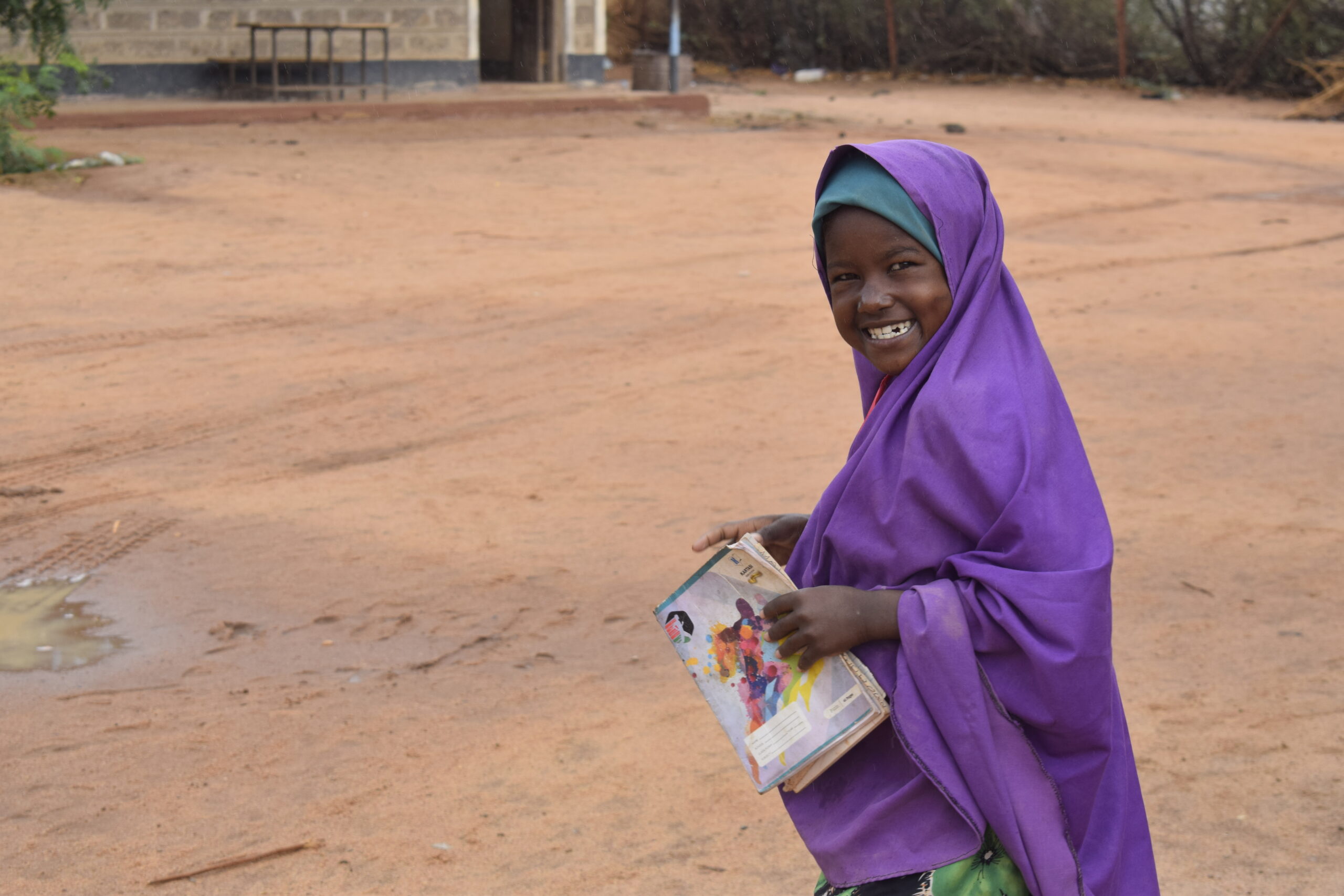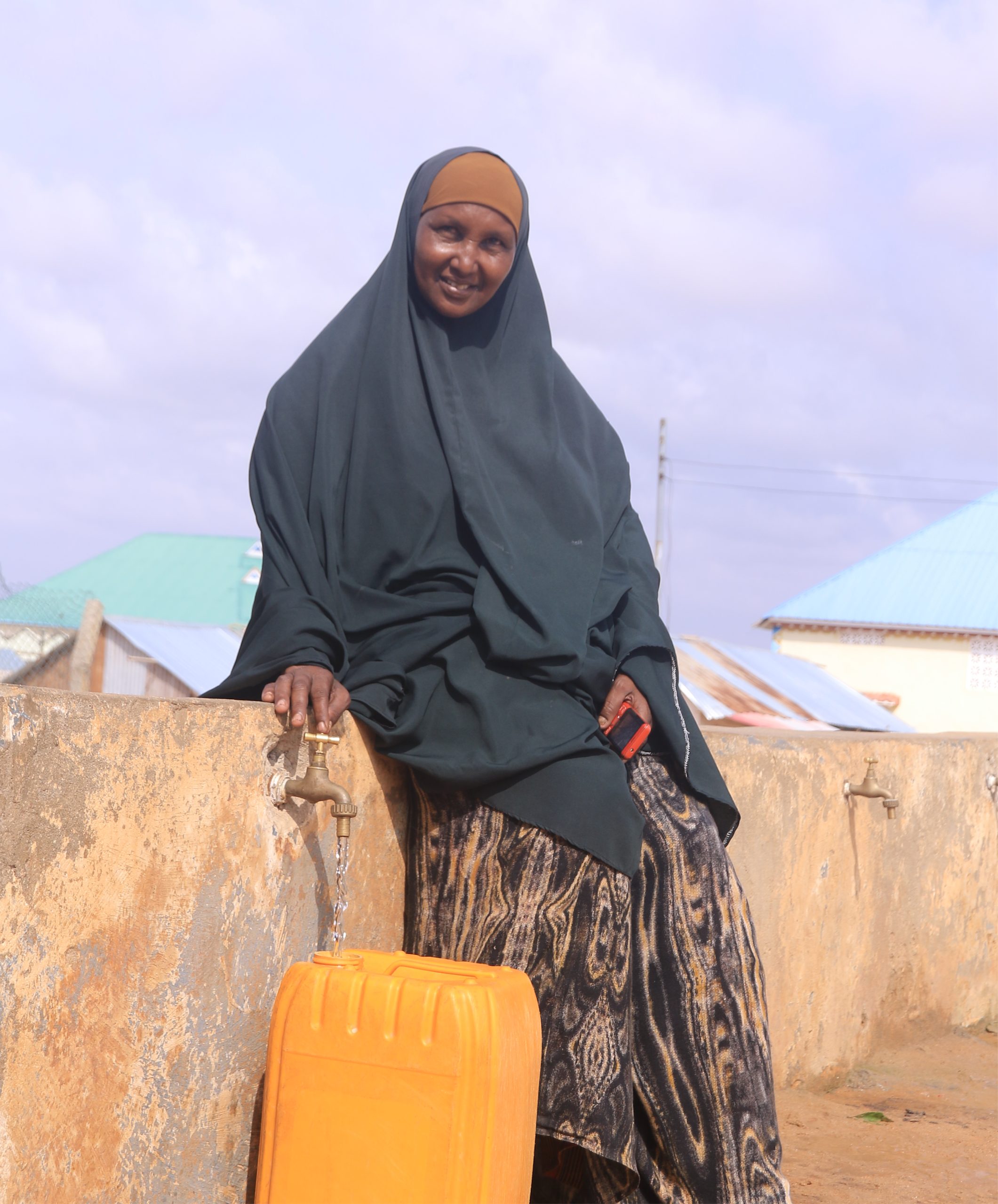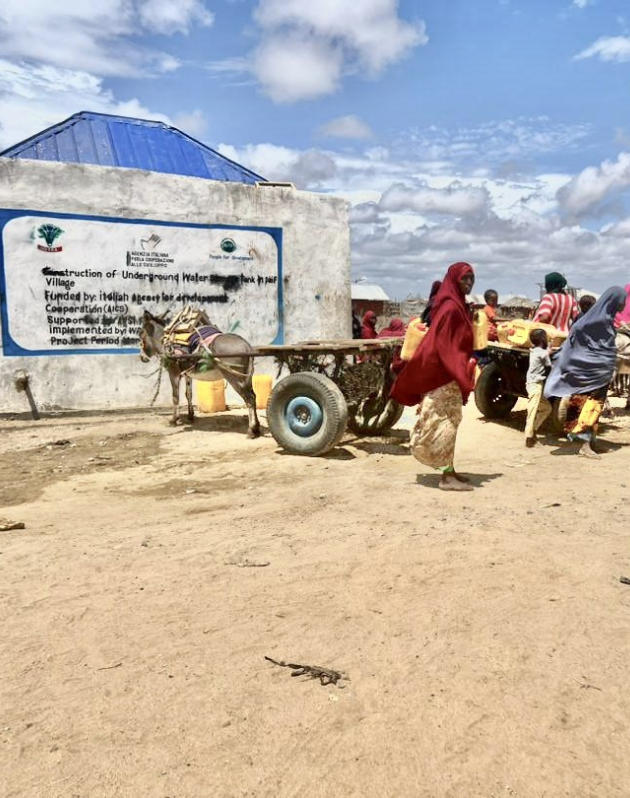AVSI in Somalia
- Kismayo Office Kibora, Sinai
Adjacent to Mecca Hotel Kismayo, Somalia - Mogadishu Desk Office Airport road, Wadajir District, Mogadishu
- Dhobley Desk Office Dobley Town, Waberi Area
AVSI has been supporting the Somali community since 2009 in Kenya's Dadaab refugee camps, promoting education in emergencies by constructing, rehabilitating, and equipping educational infrastructure, providing youth with skills through scouting programs, and offering teacher training.
As a result of the flux of repatriation, from Dadaab to Somalia, and at the request of the Director General of the Ministry of Education of Jubaland (a former refugee in Dadaab), AVSI started to operate in Somalia in 2017.
Somalia today
Somalia is situated in the easternmost part of Africa, where its landmass extends into the Indian Ocean, forming a horn-like shape that gives the region its name, the "Horn of Africa."
Somalia's Human Development Index (HDI) is at 0.380 and among the lowest globally, reflecting significant challenges in education, health, and income. Prolonged conflict, poverty, and limited infrastructure have hindered progress in improving quality of life.
Somalia's poverty is driven by decades of conflict, political instability, and weak governance, which have disrupted economic activities and development. Additionally, frequent droughts, limited access to education and healthcare, and reliance on subsistence farming further exacerbate poverty.
AVSI’s Dadaab – Somalia cross-border relationship enhances education in Somalia
The Somali refugee crisis is one of the most challenging mass displacement situations in the world. Over the last 30 years, hundreds of thousands of people have fled Somalia due to political instability and a dangerous civil war that broke out in the 1990s. According to UNHCR, Kenya hosts around 437,609 Somali refugees, with 385,328 residing in Dadaab.
Over the years, AVSI has been present in Dadaab; promoting education of the refugees, 96% of whom come from Somalia. A key focus of AVSI's efforts to improve the education system in Dadaab is teacher training, an initiative that dates to 2016. Since then, 4,000 teachers have been trained, the majority of whom are women. Today, according to the Cross border household multi-sector survey Kenya and Somalia, nearly a quarter (23%) of teachers in Lower Juba have received training by AVSI in Dadaab. Furthermore, 67% of school headteachers rate the technical capacity of these trained teachers as very good, compared to those who have not received training in Dadaab.
AVSI’s climate action: local solutions for a global crisis
Somalia experienced the worst drought in decades in 2023, followed by the most extensive floods in generations, all within the span of just a few months. Water scarcity is one of the challenges that Somalia faces today. Its water sources are divided into 9 major water basins with the Juba and Shabelle rivers being the only two rivers in the country. Having these two rivers supplying water into the southern region of Somalia has been significant in agricultural production, however the rivers are seasonal.
AVSI actively supports communities to minimize the effects of water shortage in Somalia and flood-related challenges through sustainable solutions aimed at resilience and adaptation.
Since 2017, AVSI has worked closely with the organization WASDA to ensure improved access to clean water for over 36,000 people in Somalia. The construction of eight shallow wells in 2022 ensures water availability for both human and livestock needs, while fencing water pans enhance sanitation and safety for families relying on these resources. In 2024, infrastructure improvements included the construction of three water storage tanks in Dhobley and the installation of four irrigation pumps and four rainwater harvesting berkads in Kismayo, aimed at strengthening water accessibility and enhancing agricultural productivity and food security.To address challenges of uncontrolled access, AVSI introduced water vouchers for the elderly and the most vulnerable, a commercial mini-truck, and a water pump, making water more accessible and enabling expanded farming activities. Additionally, rain harvesting facilities and water tanks installed in schools not only promote hygiene but also reduce risks of child abuse and support consistent school attendance.

Agriculture in Somalia
Agriculture is a critical sector in Somalia, providing livelihoods for most of the population and contributing significantly to the economy. The country's agricultural activities are primarily rain-fed and include crop farming, livestock rearing, and fishing. Key crops include sorghum, maize, and sesame, while livestock such as camels, goats, and sheep are vital for income and food security. However, the sector faces significant challenges, including recurrent droughts, land degradation, limited infrastructure, and political instability.
Despite these hurdles, AVSI has made efforts to promote smart agriculture, and sustainable practices that are helping communities adapt to climate change, improve yields, and ensure food security. Distribution of rain harvesting tools, installation of water pumps to enhance irrigation in Lower Juba taping on the availability of water on Juba River, trainings on kitchen gardening, enhancement of poultry farming and support on livestock management practices not only contributes to the enhancement of continuous farming in Somalia areas but also contributes to better livelihoods in the area.

Food security in Somalia
The main factors contributing to Somalia’s food crisis are the combined impacts of insufficient and unevenly distributed rainfall, flooding, the prolonged effects of multi-season drought in Somalia’s pastoral regions, limited household access to food due to income limitations and high food prices as well as the ongoing insecurity and conflict in central and southern Somalia.
Almost one in five Somalis face high levels of acute food insecurity.
High levels of acute malnutrition persist in many areas, with an estimated 1.7 million children aged 6 months to 5 years facing acute malnutrition yearly, of whom 430,000 are likely to be severely malnourished.
AVSI responds to food insecurity in Somalia by addressing both immediate and underlying causes of Somalia hunger crisis through targeted interventions. Recognizing the challenges posed by erratic rainfall, flooding, drought, and limited access to food, AVSI supports agro-pastoral activities that enhance food production and resilience.
AVSI provides subsidized services such as:
- Tractors to enable faster land preparation, allowing Somali communities to plant during optimal seasons, improve soil management, and increase cultivated areas, boosting yields.
- Regularly educating Somali farmers from the host communities and the Internally Displaced Camps on how to produce organic fertilizers as a way of promoting self-reliance, enhancing food security, and supporting environmental sustainability
- Distributing drought resistant seeds including that of maize, beans and fodder crops to help reduce the risk of total crop failure, ensuring a stable food supply even during adverse weather conditions
- Training Somali communities on sustainable farming techniques such as crop rotation, water conservation and organic farming that help maintain soil health, reduce agroforest resource depletion, and enhance resilience to climate change essential hence ensuring to ensure long-term food security, environmental protection, and economic resilience.
- Cash4work programs have aided the internally displaced and vulnerable people from the host community to make an income while providing farm support for the community.
- Value chain approach: AVSI strengthens local food systems by investing in poultry (providing incubators, startup feeds and improved chicks), livestock (Over 30,000 livestock units treated against deadly diseases) and fish value chains (supporting fishermen with 10 new boats, fishing nets, and 2 huts) thus creating alternative livelihoods and promoting access to nutritious food.
Empowering Somalia’s migrants, internally displaced population and returnees for a sustainable future
Somalia, with a population of 19 million people, is characterized by a complex demographic landscape comprising migrants, internally displaced persons (IDPs), and refugee returnees.
Factors contributing to migration are harsh climate change, poverty, unemployment and national instability forces people to look for safe spaces. The migration dynamics of Somalia has had its implication towards the growth and stabilizing of the socio-economic sector.
AVSI addresses challenges related to immigration, displacement, and returnees by fostering resilience and creating sustainable opportunities for vulnerable communities. Through integrated programs, the livelihoods of Somalia communities are strengthened. Collaborative action with the Somalia education sector ensures that the certified teachers voluntarily repatriating from Dadaab enter the job market seamlessly. Proposed smart agriculture practices and cash4work schemes ensure the affected communities can produce food, make an income and withstand climate shocks such as drought and floods.

Humanitarian actions with graduation to resilience approach
AVSI is implementing the graduation approach in Somalia as a holistic, phased strategy designed to lift ultra-poor households out of poverty and enable sustainable livelihoods.
This methodology combines immediate relief with long-term resilience-building by integrating social protection, skills training, asset transfers, financial inclusion, and continuous coaching.
In Somalia, where communities face extreme poverty, displacement, and vulnerability due to prolonged conflict and climate crises, the graduation approach approach addresses the root causes of poverty.
Regular household progress assessment informs on the targeted interventions such as cash transfers, skills for income generation, and support for accessing markets, enabling them to gradually achieve self-reliance and reduce dependency on aid. AVSI does not work alone to achieve its goals; donors, national and county governments, like-minded organizations, research institutes, local entities, and institutions play key roles too.
In Somalia, AVSI targets 54,000 households (approximately 378,000 individuals) in the Internally Displaced Population (IDP) settlements and host communities, leveraging on a locally adapted Graduation Approach to empower extremely poor and socially marginalized groups to build resilience despite ongoing shocks and stresses.















